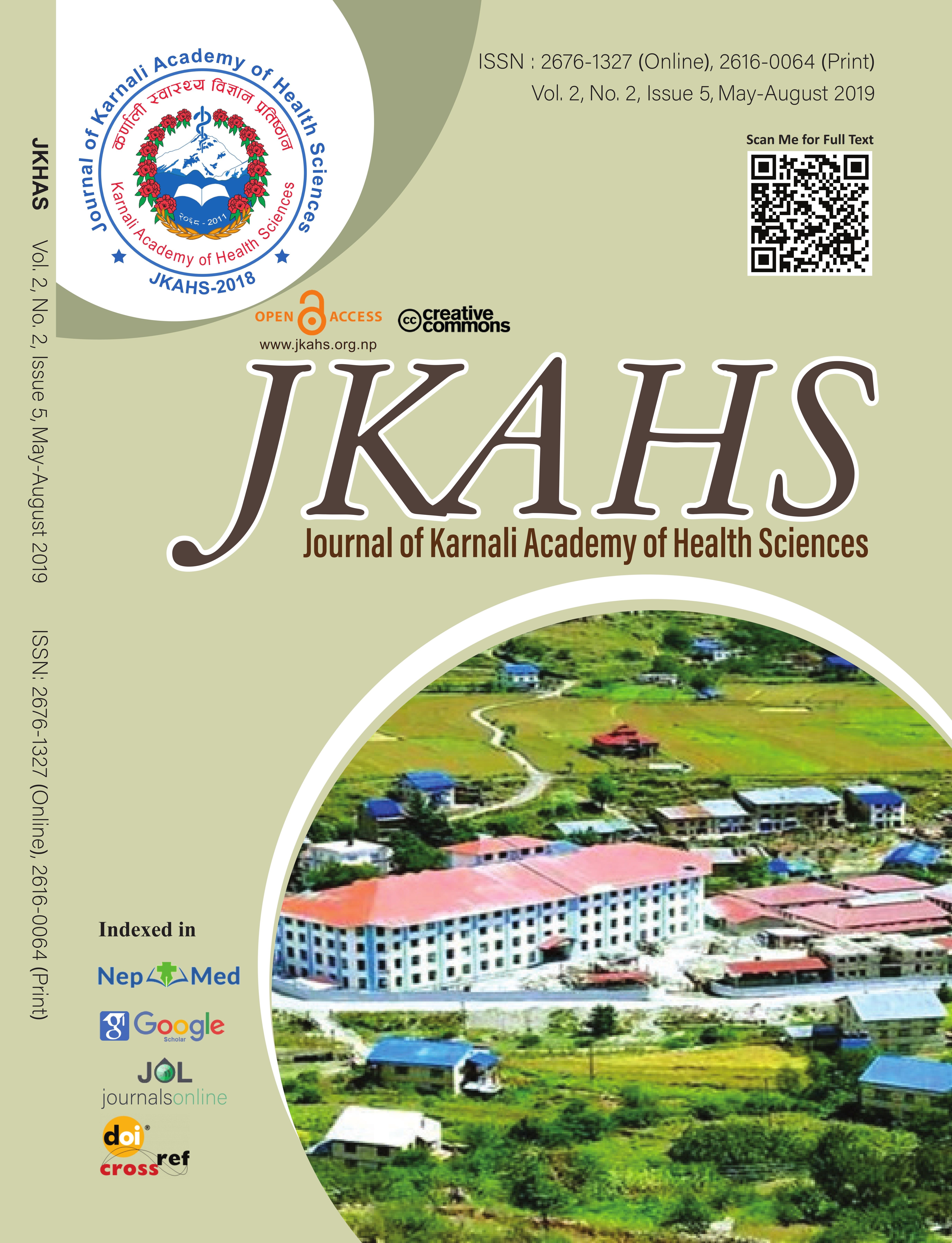Diagnostic yield of combined ACR TI-RADS and Sonoelastography in solid thyroid nodules in tertiary care center: A prospective cross-sectional Study
DOI:
https://doi.org/10.61814/jkahs.v7i2.939Keywords:
Cytology, Elasticity, Thyroid, TI-RADS, Ultrasound, Malignant NodulesAbstract
Background: Thyroid nodules are prevalent, and accurate differentiation between benign and malignant nodules is crucial for management. We aim to evaluate the effectiveness of combining Thyroid Imaging Reporting and Data System (TIRADS) scoring with strain elastography, specifically the Elasticity Contrast Index (ECI), to differentiate between benign and malignant thyroid nodules.
Methods: This analytical cross-sectional study involved 77 patients with solid thyroid nodules identified through B-mode ultrasonography. ACR TI-RADS scores, ECI values, and combined scores were compared with Fine needle aspiration Cytology (FNAC) results. Statistical analysis was performed using SPSS, and Pearson correlation tests were conducted to assess the correlation with FNAC findings.
Result: The TI-RADS scoring system has a sensitivity of 83.3%, a specificity of 66.1%, and a positive predictive value of 42.9% for distinguishing benign and malignant nodules. Strain elastography with ECI values has a sensitivity of 94.4%, specificity of 98.3%, PPV of 94.4%, and NPV of 98.3%. Combining ACR TI-RADS and strain elastography achieves a sensitivity of 100%, specificity of 66.1%, NPV of 100%, and PPV of 47.4%.
Conclusion: The study emphasizes the benefits of integrating noninvasive methods like ultrasound elastography and ACR TI-RADS for improved diagnostic precision, minimizing invasion and patient discomfort. This strategy is particularly advantageous for TI-RADS 3 nodules and reduces unnecessary procedures. However, FNAC should be reasonable and validated for higher classifications.
Downloads
Published
How to Cite
Issue
Section
License
Copyright (c) 2024 Saubhagya Dhakal, Shailendra Katwal, Sharma Paudel, Birendra Kumar Yadav

This work is licensed under a Creative Commons Attribution 4.0 International License.
The author(s) retain the copyright and the full publishing right without restriction under the Creative Commons Attribution 4.0 International License (CC BY 4.0) which allows readers to share (copy and redistribute the material in any medium or format) and adapt (remix, transform, and build upon the material) for any purpose, even commercially, provided the work is properly attributed. (https://creativecommons.org/licenses/by/4.0/).
Author(s) grant the non-exclusive publishing right to the Journal of Karnali Academy of Health Sciences (JKAHS). The publishing rights include the rights to publish, reproduce, distribute, include in indexes or search databases or other media in print or online. The JKAHS may require revisions to the manuscript before acceptance for publication or may choose not to publish it based on the judgement of the editors. Further, JKAHS might retract, withdraw, or publish a correction or other notice after publication, if such publication would be inconsistent with the good publication practices and associated guidelines set forth by the COPE (Committee on Publication Ethics) (https://publicationethics.org/core-practices).
More information about the Creative Commons Attribution 4.0 International License can be found in the webpage of Creative Commons (CC) by following the link provided below: https://creativecommons.org/licenses/by/4.0/


